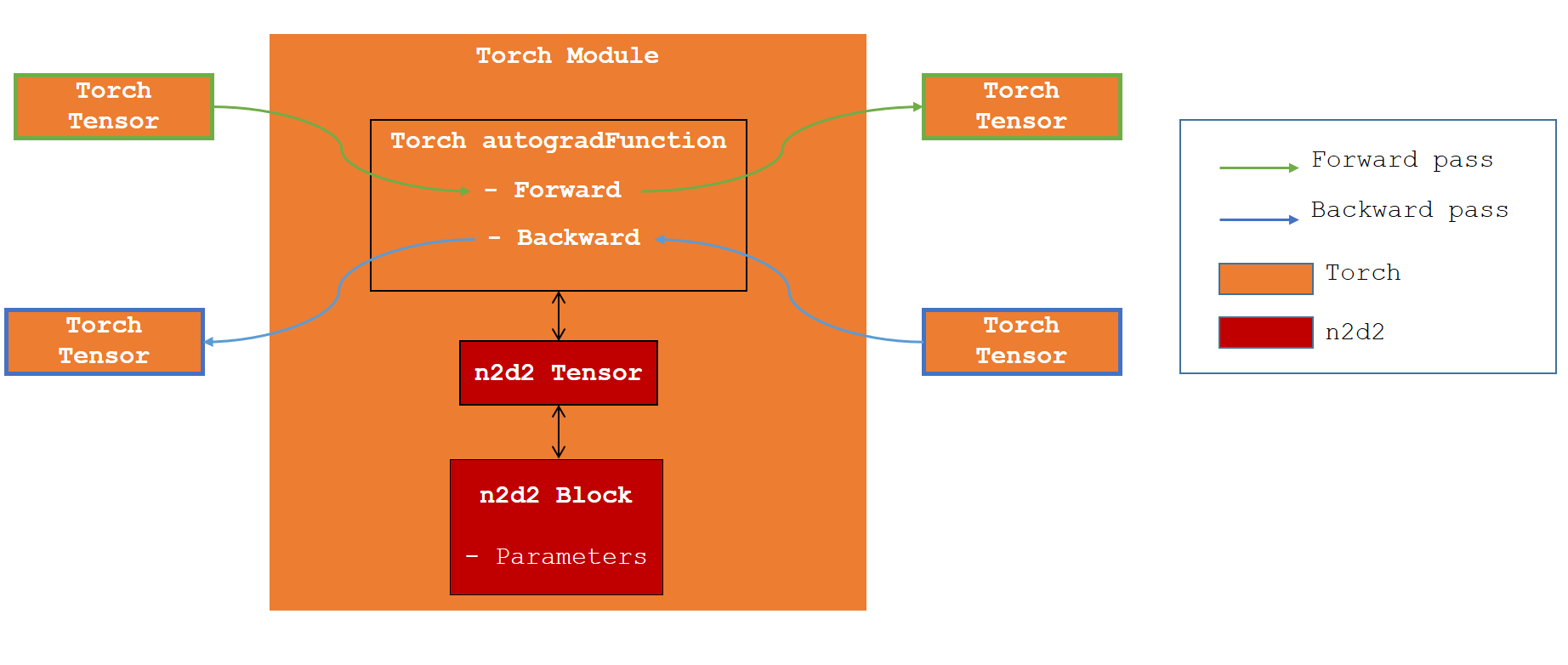Interoperability¶
In this section, we will present how you can use n2d2 with other python framework.
Keras [experimental feature]¶
Presentation¶
The Keras interoperability allow you to train a model using the N2D2 backend with the TensorFlow/Keras frontend.
The interoperability consist of a wrapper around the N2D2 Network.
In order to integrate N2D2 into the Keras environment, we run TensorFlow in eager mode.
Documentation¶
Changing the optimizer¶
Warning
Due to the implementation, n2d2 parameters are not visible to Keras and thus cannot be optimized by a Keras optimizer.
When compiling the keras_to_n2d2.CustomSequential, you can pass an n2d2.solver.Solver object to the parameter optimizer.
This will change the method used to optimize the parameters.
model.summary() # Use the default SGD solver.
model.compile(loss="categorical_crossentropy", optimizer=n2d2.solver.Adam(), metrics=["accuracy"])
model.summary() # Use the newly defined Adam solver.
Example¶
See the keras example section.
PyTorch [experimental feature]¶
Presentation¶
The PyTorch interoperability allow you to run an n2d2 model by using the Torch functions.
The interoperability consist of a wrapper around the N2D2 Network.
We created an autograd function which on Forward call the n2d2 Propagate method and on Backward call the n2d2 Back Propagate and Update methods.

Warning
Due to the implementation n2d2 parameters are not visible to Torch and thus cannot be trained with a torch Optimizer.
Tensor conversion¶
In order to achieve this interoperability, we need to convert Tensor from Torch to n2d2 and vice versa.
n2d2.Tensor require a contiguous memory space which is not the case for Torch. Thus the conversion Torch to n2d2 require a memory copy.
The opposite conversion is done with no memory copy.
If you work with CUDA tensor, the conversion Torch to n2d2 is also done with no copy on the GPU (a copy on the host is however required).
Documentation¶
Example¶
See the torch example section.